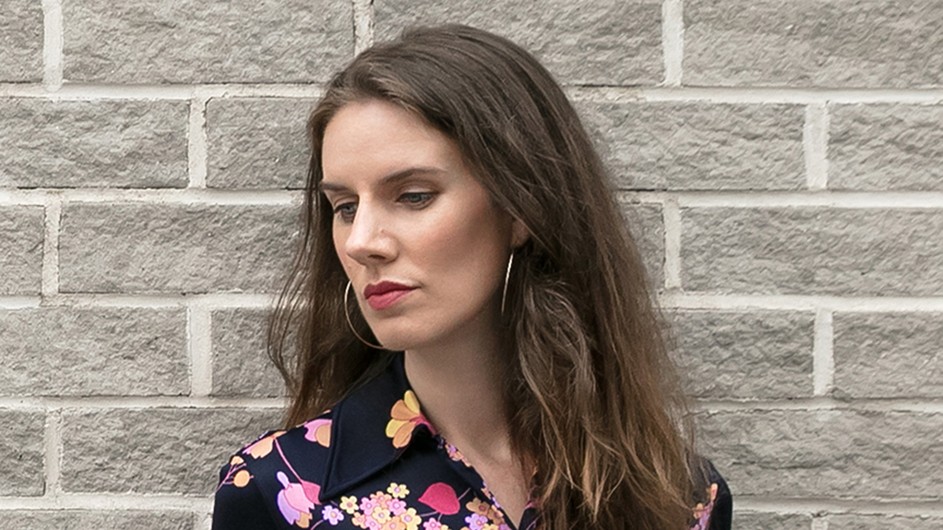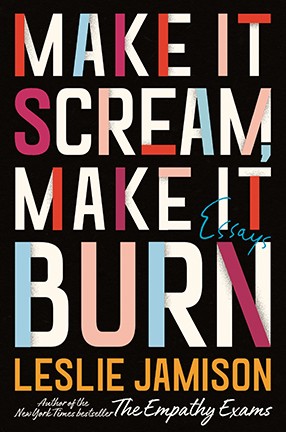Leslie Jamison on Essays and How She Couldn’t Write Without Reading
Her students constantly inspire her, as does living and working in New York.

If your interests range from, say, the Civil War photography of Matthew Brady or a museum in Croatia devoted entirely to the relics of broken relationships, to the sounds of lonely whales, pick up a copy of Leslie Jamison’s new book of 14 essays, Make It Scream, Make It Burn. In a discussion with Columbia News, Jamison, the director of the graduate nonfiction writing program at the School of the Arts, touches on what she adores about writing essays, how crucial reading is to the art of writing and some of her favorite children’s books.
Q. Many of the reviews of Make it Scream, Make it Burn reference the fact that the book is a blend of journalism, memoir and criticism. Can you easily switch genres or do you prefer to focus on one particular kind of writing?
A. I love the way that essays allow me to bring multiple modes of thinking and writing—reportage, criticism, personal narrative—into the same piece. Many of the pieces in my new collection draw from all three modes to think about particular subjects—kids with past life memories, the impact of breakups in our lives, the ethics of documentary art—from as many angles as possible: personal, critical, journalistic. I get excited by letting these modes speak to one another, rather than keeping them segregated.
Q. In a recent interview you did with The New York Times, you mentioned how much you admired one of your writing professors, especially his “commitment to nuance and specificity.” What do you mean by that?
A. I love how Charlie D'Ambrosio—my teacher at the Iowa Writers’ Workshop, and now friend—would find large truths in small details: the syntax of his brother's suicide note, or the lack of trash cans in a Russian orphanage (because the boys in that orphanage had so little to throw away). I also love the way he refuses to settle on any single meaning, insisting instead on complexity and contradiction, to insist that the work hold complexity, because life holds complexity, and people hold complexity. I try to bring that commitment to my writing, and to my teaching.

Q. How important to the craft of writing is reading?
A. It's impossible for me to imagine writing without reading, and often the influence moves across genres. For example, James Salter's Light Years is a novel that has had a huge impact on my nonfiction writing about romantic intimacy and its dissolution. Kaveh Akbar's poems about drinking and sobriety have influenced the ways these themes show up in my essays. It's not just about learning craft lessons from other writers, it's about being brought back to a state of awe about what writing can do.
Q. Do you read books or e-books?
A. Always books! Except when I was nursing my daughter, in which case the glowing screen of an e-book was very useful for reading in the middle of the night.
Q. What are some of your favorite childrens’ books, ones that you read and that you read to your own kids?
A. I love Frederick, about the little poet-mouse who gets the other mice through a long winter by telling them stories. And I love The Maggie B., about a girl who dreams of having her very own ship. Norton Juster's The Phantom Tollbooth was my favorite book as a kid—about imagination as a land you could enter—and I can't wait for my daughter to be old enough to read it.
Q. How does the intersection of teaching and writing affect you?
A. My students inspire me constantly, and I feel like I'm always learning with them rather than teaching them: the questions they are wrestling with (how to immerse a reader in a world, how and when the first-person can shed light on something larger) are questions that I'm still wrestling with, will always be wrestling with.
Q. What are you teaching now? And in the spring?
A. I'm teaching a thesis workshop and a seminar called "Archive Fever," in which we are thinking about how creative writers can respond to archival materials in their work. We are visiting six different archives across the city, including the New York Public Library, the New York Academy of Medicine, the Morgan Library and the Schomburg Center, where we got to look at Langston Hughes’ and Lorraine Hansberry's correspondence, and talk about how friendships between writers can enhance their work. In the spring I'll teach a nonfiction workshop.
Q. How does living and working in New York influence your writing?
A. Living in New York has made me increasingly fascinated by the lives of strangers, in large part because the subways ask us to spend large portions of our lives sharing space with strangers and wondering about their lives. I just wrote a long essay for The Atlantic about the photographs of Garry Winogrand in which I was thinking about how much beauty he found in the faces and bodies of strangers across New York, from the sidewalks of Manhattan to the Coney Island boardwalk.
Q. What are you working on now?
A. I'm working on an essay for The New York Review of Books about the street artist JR and an exhibition of home videos that's up at the Museum of Modern Art.